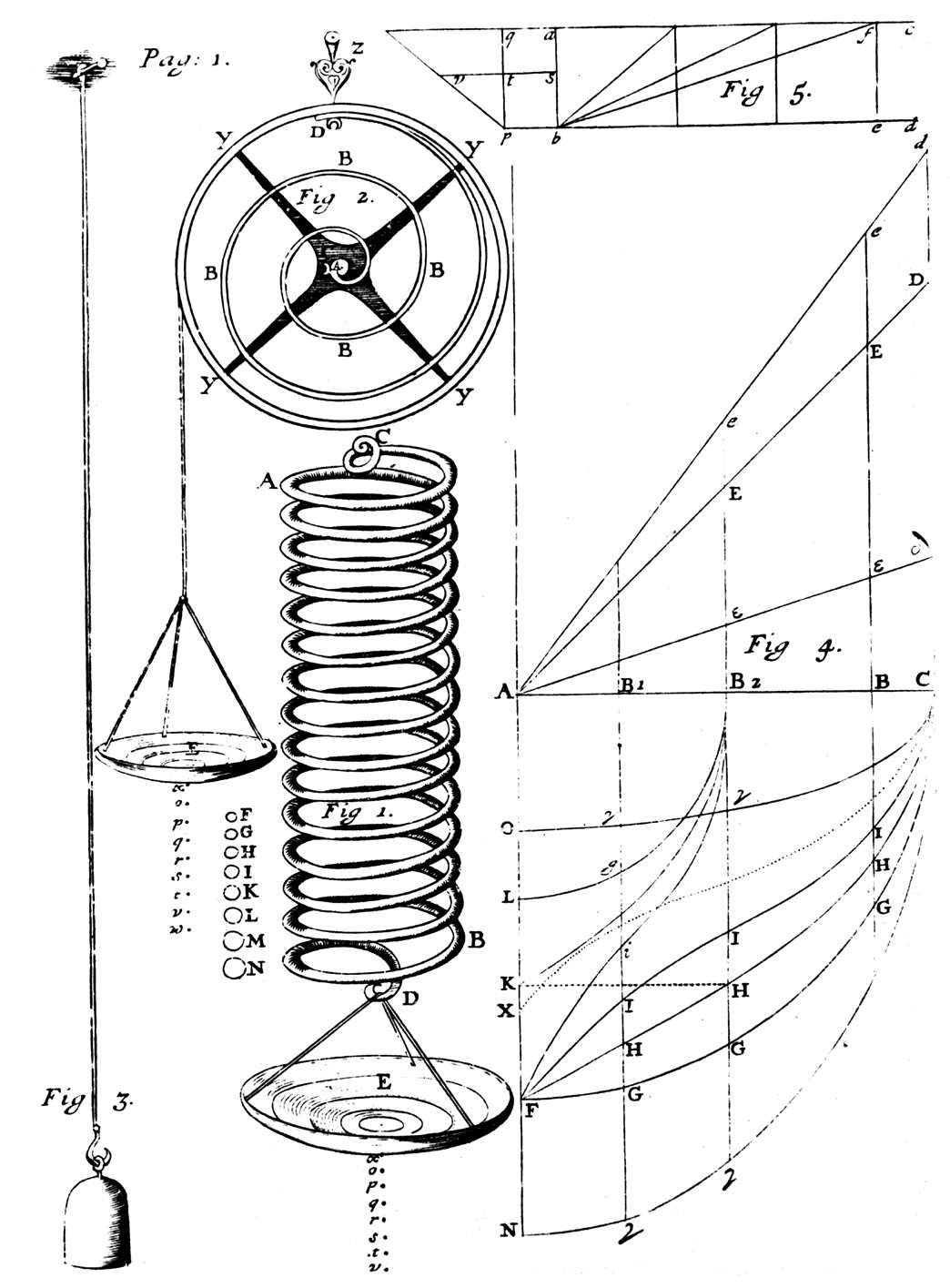
Robert Hooke (1635–1703) is probably best known in physics for his law of elasticity, which he first stated in 1660 as ceiiinosssttuv. When unscrambled, this produces the Latin ut tensio, sic vis, meaning ‘as the (ex)tension, so the force’ — in more familar language, ‘the force is proportional to the extension’. Hooke used the Latin anagram to stake a claim to his discovery and give himself time to verify it without drawing it too obviously to the attention of anyone else who might steal the credit. He finally published his work on springs in 1678 (Figure 1).
As one of the first Fellows of the Royal Society and its first curator of experiments, Hooke explored many areas of science, including gravitation, fossils, time measurement and the behaviour of gases. But perhaps his greatest influence was in biology. Hooke was one of the first to use a microscope (Figure 2) to study living things. His Micrographia, published in 1665, contains many detailed drawings (Figure 3) that opened people’s eyes to the microscopic world, and it was Hooke who suggested the term ‘cell’ to name the tiny structures that he saw.
Your organisation does not have access to this article.
Sign up today to give your students the edge they need to achieve their best grades with subject expertise
Subscribe




